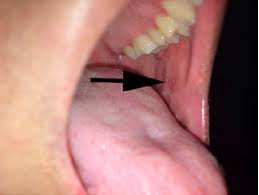Abstract: Acid peptic disease is one of the commonest disorders encountered in clinical practice. Acid peptic diseases accounts nearly of about 10% of the medical cost for digestive diseases. Modern medicine has relied on the use of antacids, proton pump inhibitor, and H2 receptor blockers as the mainstay of medical therapy and operations that reduce acid secretion as a major surgical approach in peptic ulcers.
It has now become highly prevalent due to various stresses encountered in modern life. Stress is seen in various aspects of life, in interpersonal relationships, areas of work, financial matters, etc. Also, the tight and busy schedule of this world has lead to a disordered lifestyle like irregular meals, smoking, fast food dependencies, etc., all of which can cause the disease.
Keywords:
Homoeopathy; acid peptic disorder, miasm.
INTRODUCTION
Acid peptic diseases include various disorders like Gastro-esophageal reflux disease, Gastritis, Peptic ulcer diseases, and Zollinger Ellison syndrome. The pathogenesis of these disorders involves an imbalance between acid secretion and gastric mucosal defenses, in which the mucosa of the stomach and duodenum commonly gets damaged or destroyed causing ulcers to appear.
Perhaps one factor in an increase in these diseases is irregular dietary habits or perhaps we have become more susceptible to these diseases due to our stressful modern lifestyles. Modern life is full of hassles, deadlines, frustrations, and demands. For many people, stress is so common that it has become a way of life. Beyond certain point stress starts causing major damage to health. Acid peptic diseases account nearly 10% of the medical cost for digestive diseases. Modern medicine has relied on the use of antacids, proton pump inhibitor, and H2 receptor blockers as the mainstay of medical therapy and operations that reduce acid secretion as a major surgical approach in peptic ulcers. All the different modes of treatment have only helped in palliating the diseases. Homoeopathic treatment is superior to other modes of treatment since it treats the cause and not the effects. Homoeopathy considers Man as a whole and does not try to separate individual parts for treatment.
Acid peptic diseases include a number of conditions whose pathophysiology is said to be result of damage from acid as well as peptic activity in gastric juices or secretions. The conditions under acid peptic diseases are:
1. Gastroesophageal reflux disease
2. Gastritis
3. Peptic ulcer disease
4. Zollinger – Ellison syndrome
GASTROESOPHAGEAL REFLUX DISEASE (GERD)
It is defined as chronic symptomatic or mucosal damage produced by abnormal reflux of gastric contents into the esophagus. Transient lower esophageal sphincter relaxation is an important factor in GERD.
GASTRITIS
Gastritis is an inflammation, irritation, or erosion of the lining of the stomach. It can occur suddenly (acute) or gradually (chronic).
PEPTIC ULCER DISEASE
An ulcer that develops in the area of GI tract exposed to acid gastric juice is called peptic ulcer. No single cause has been found for ulcers. However, it is now clear that an ulcer is the end result of an imbalance between digestive fluids in the stomach and duodenum.
Classification
1.Gastric ulcer
2.Duodenal ulcer
ZOLLINGER – ELLISON SYNDROME (GASTRINOMA)
Zollinger – Ellison Syndrome can be defined as severe peptic ulcer diathesis secondary to gastric acid hypersecretion due to unregulated gastrin release from a non-cell endocrine tumor (gastrinoma).
Causes:
Abnormalities of lower esophageal sphincter, Hiatus hernia, Delayed esophageal clearance, Gastric contents, Delayed gastric emptying, Increased intra-abdominal pressure, Dietary and environmental factors. Helicobacter pylori, NSAID’s and glucocorticoids, Irregular eating habits combined with addictions like smoking, alcoholism and stress(emotional).
Symptoms:
In GERD and Gastritis-Heartburn (pyrosis), Regurgitation, Dysphasia, Odynophagia, Water brash,Chest pain, Pulmonary symptoms may be the only manifestation of GERD and include chronic cough, hoarseness of voice, wheezing, haemoptysis, asthma, and recurrent aspiration pneumonia.Burning produced by bending, stooping or lying down. Eructation and dyspepsia are other symptoms.
In Peptic ulcers: Gnawing or burning pain in the middle or upper stomach between meals or at night, Bloating, Heartburn, Nausea & vomiting. In severe cases, symptoms can include: Dark or black stool (due to bleeding) and Vomiting blood (can have a coffee-grounds appearance).
In Z-E Syndrome: Gastric acid hypersecretion is responsible for the signs and symptoms. Peptic ulcer is the most common clinical manifestation. Gastrinoma Esophageal symptoms- mild esophagitis to frank ulceration with stricture and Barrett’s mucosa. Diarrhoea.
Diagnosis:
Acid peptic disorder can be diagnosed by following investigations:
Barium swallow and meal examination, Endoscopy, esophageal manometry, 24 hour pH monitoring.
Stool test: The test checks for the presence of blood in the stool, a sign of bleeding.
Examination of blood: Hb will be low due to chronic blood loss. Serum gastrin level highly elevated. Tumor localization by endoscopic ultrasound.
Homoeopathic Management and prevention:
Lifestyle advice, including weight loss, avoidance of dietary items which the patient finds worsen symptoms, elevation of the bed head in those who experience nocturnal symptoms, avoidance of late meals and giving up smoking, are recommended but rarely heeded. Rest as far as practicable. Anxiety & elements of stress and strain should be avoided. Diets should be regulated and must be taken in time. Alcohol to be prohibited. Approximately 30% of small and single tumors can be localized and resected. Some patients present with metastatic disease and surgery is inappropriate. Overall 5-year survival is 60 to 75%.
MIASMATIC APPROACH OF ACID PEPTIC DISORDER
Hahnemann’s theory of miasms and the origin of the chronic disease is the most fundamental and original approach to the understanding of the phenomenon of the disease from the evolutionary point of view.
The primary disturbances of the disease are exhibited at the level of mind. Disease response is an alteration of the relationship between input and output. The different environment to which the organism is susceptible is:
1) Physical
2) Emotional
3) Biological
4) Socio-cultural
In Hahnemann’s words, the true natural chronic diseases are those that arise from chronic miasm, when left to themselves, improper treatment, go on to increase, growing worse and torment the patient to the end of his life. (Aphorism 78 Organon of Medicine).
Hahnemann spent 12 years investigating miasms and collecting proof of his findings, the results of which can be found in his work, The Chronic Diseases. He named three miasms – Psora, Sycosis, and Syphilis. Later a fourth miasm was added (by J. H. Allen), called Pseudo Psora or Tubercular Miasm.
Psoric Manifestation of Acid peptic disease
- Unnatural hunger, hunger an hour before or an hour after eating regularly.
- Hunger during sleep or at night hour.
- Full stomach with hunger, with weak gone feeling in the abdomen with great prostration, perspiration after eating.
- Dull feeling with distension of abdomen after eating, with flatulence.
- Fainting when hungry.
- Constrictive feeling around the abdomen. Audible rumbling in the bowels.
- Disagrees to too many food items.
- Pain > gentle pressure.
- Constipation or inactivity of the bowels.
- Diarrhea from overeating.
Sycotic manifestation of Acid peptic disease
- Abdominal colic > doubling up
- >motion, hard pressure.
- Abdomen pains even from slightest or simplest food.
- Colic is prominent in painful diarrhea. Loud eructation
- Changeable stool with mucous.
Tubercular manifestation of Acid peptic disease
- Extreme hunger
- Constant hunger and eating beyond their capacity to digest.
- Worse from constipation and inactivity.
- Saucer shaped abdomen. Highly sensitive to cold.
- Diarrhea with great exhaustion with a feeling as if whole vitality is leaving after each evacuation
- Sudden urgency <meat, potatoes.
- Vomiting and retching after stool.
Syphilitic manifestation of Acid peptic disease
- Irregular peristalsis resulting in spasm associated with dysentery
- Diarrhea worse at night.
- Diarrhea accompanies with profuse warm or cold perspiration which is very much exhausting
- Stool mixed with lots of mucus, scrapings of the intestine and sometimes blood.
Bibliography And References
- API Text Book of Medicine; Shah NS, Paulanand, Acharya N, Vidya N, Bichile SR, Karnad RD.; 7th ed.; Mumbai: The Association of Physicians of India.; 2003.
- Davidson’s Principles and Practice of Medicine; Colledge NR, Walker BR, Ralston SH.; 21th ed.; Churchill Livingstone; 2010.
- Principles and Art of cure by Homoeopathy Roberts HA.; B. Jain Publishers (P) Ltd.; 2006.
- The Genius of Homoeopathy; Close S.; B. Jain Publishers (P) Ltd.; 2006.
- The Chronic Diseases, their peculiar nature and their Homoeopathic treatment; Hahnemann S.; B.Jain Publishers; Reprint edition; 1997.
- www.wikipedia.org/wiki/acid_peptic_disease .
- www.ncbi.nim.nih.gov/pmc/articals/pmc38622584
- www.who.int/topics/acid_peptic_disease.
Searching Tags: Acid Peptic Disease, Acid Peptic Disease Signs, Acid Peptic Disease Symptoms, Acid Peptic Disorder, Acid Peptic Disease Homeopathic Treatment





